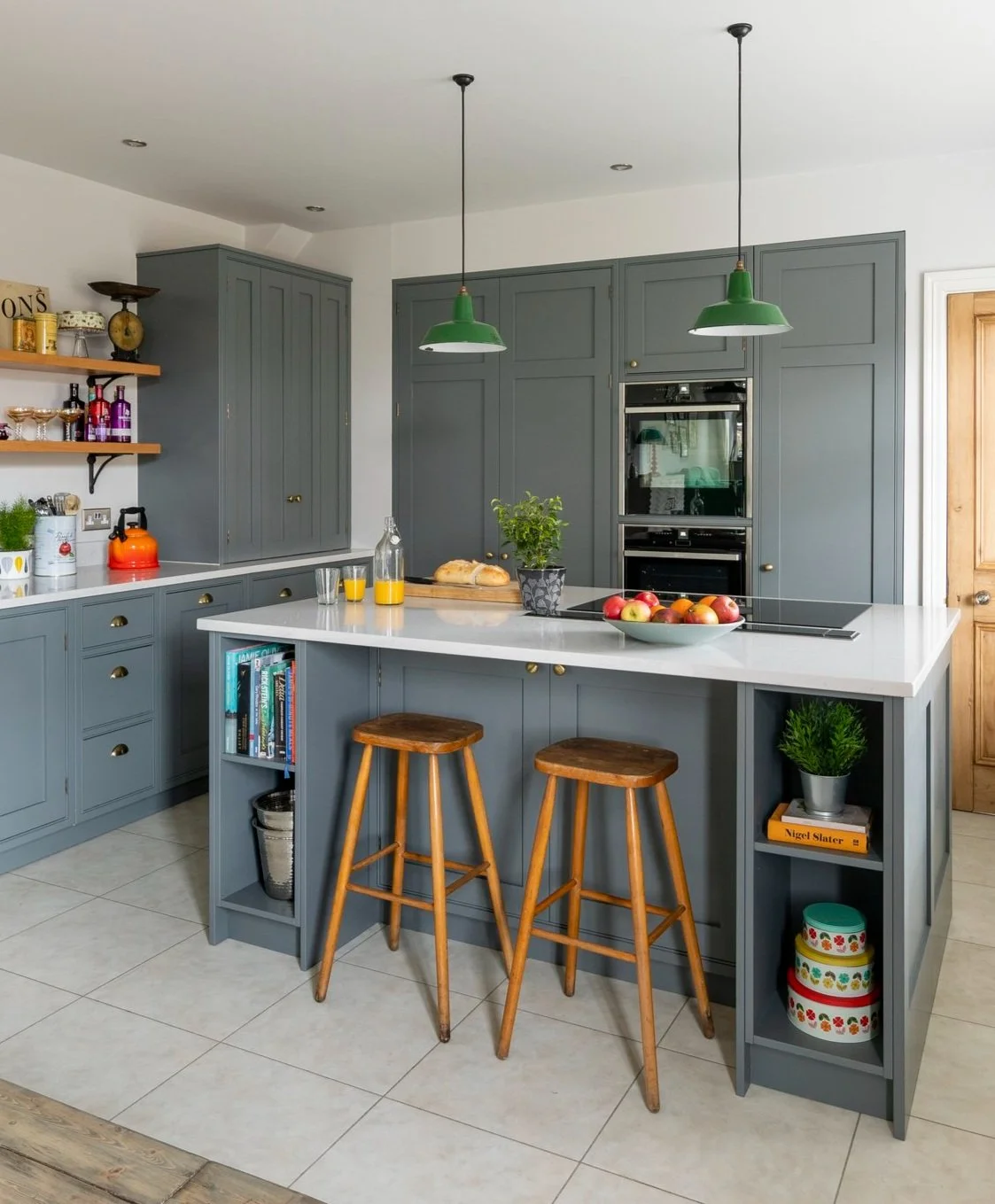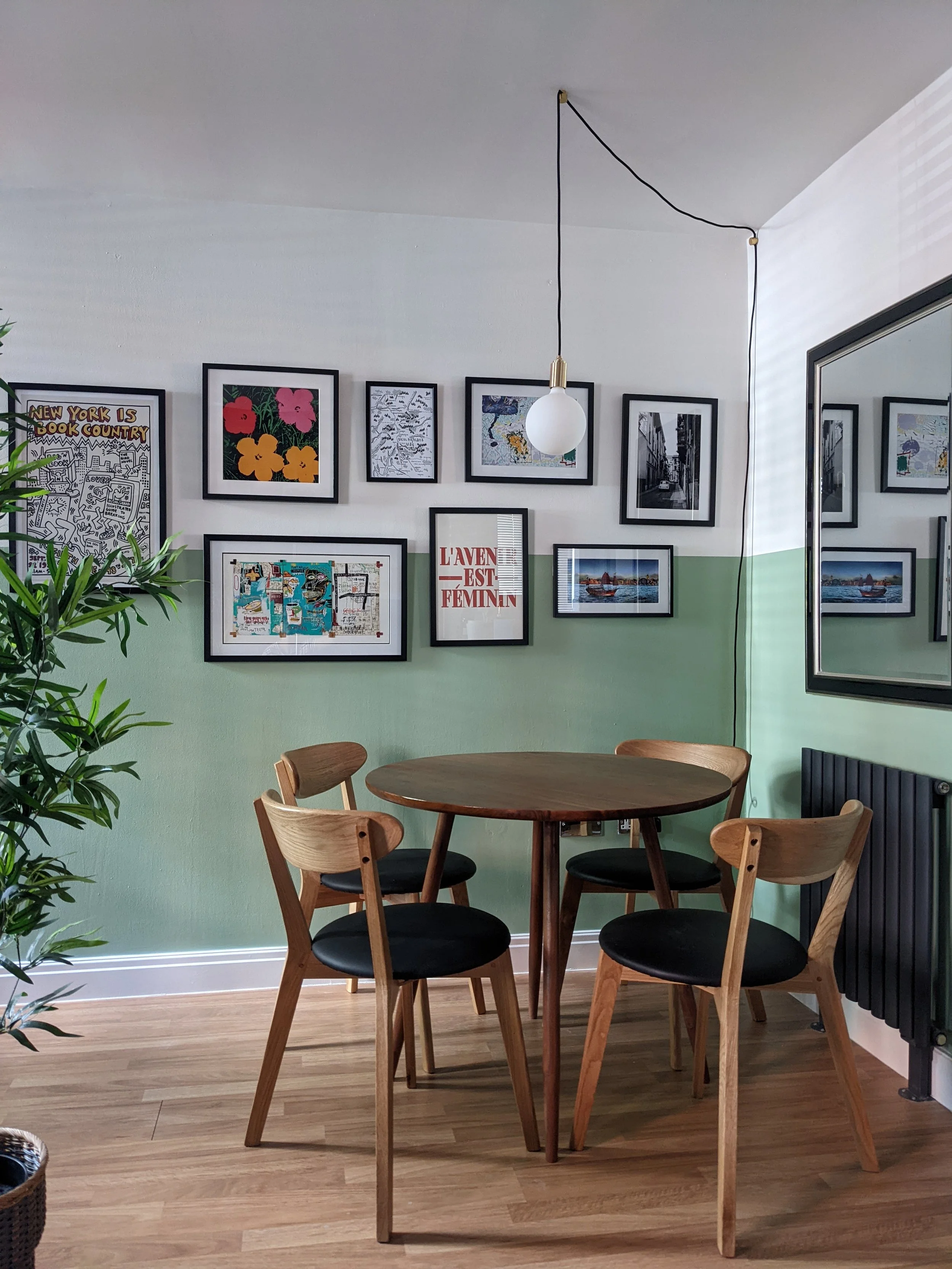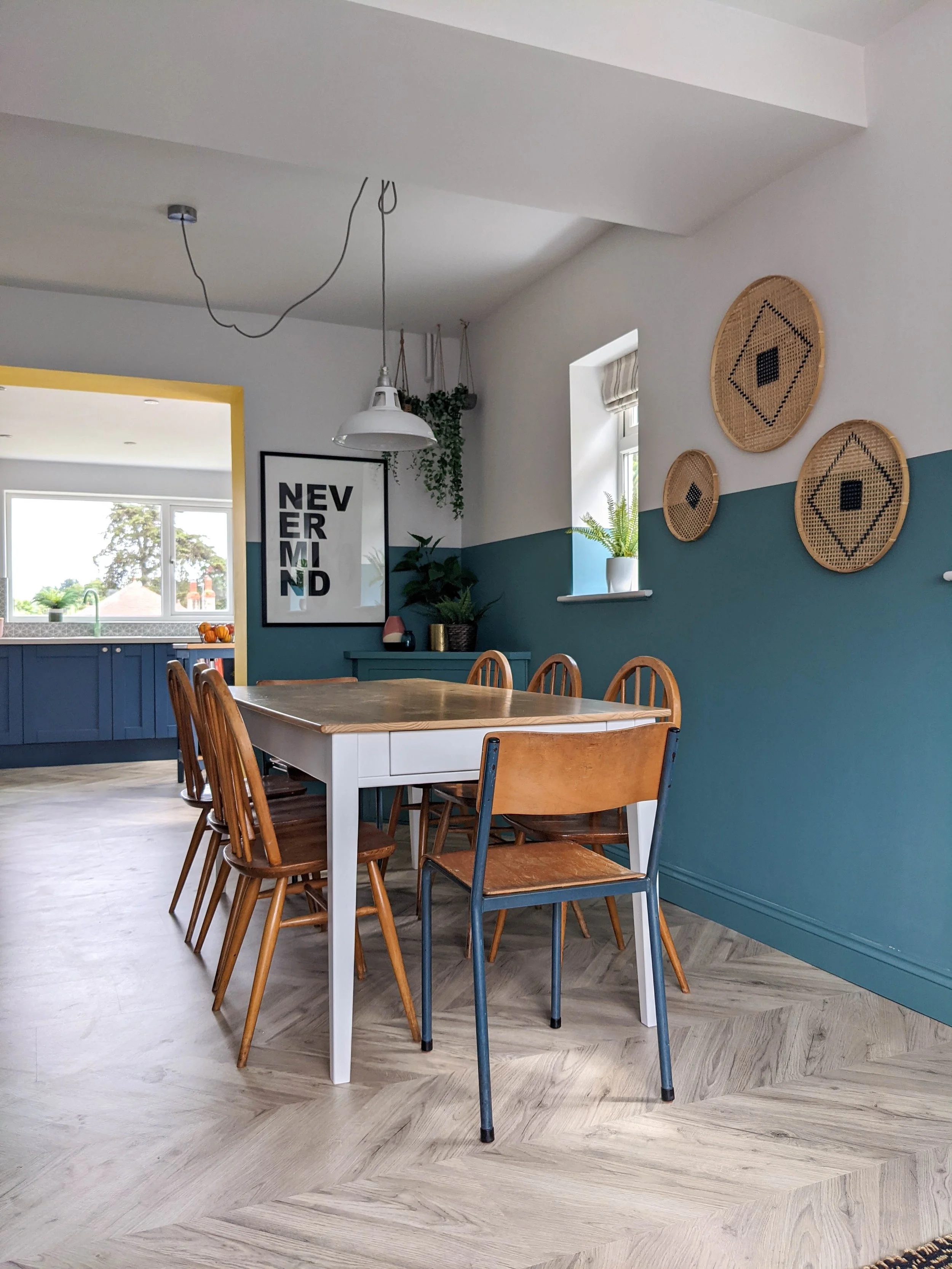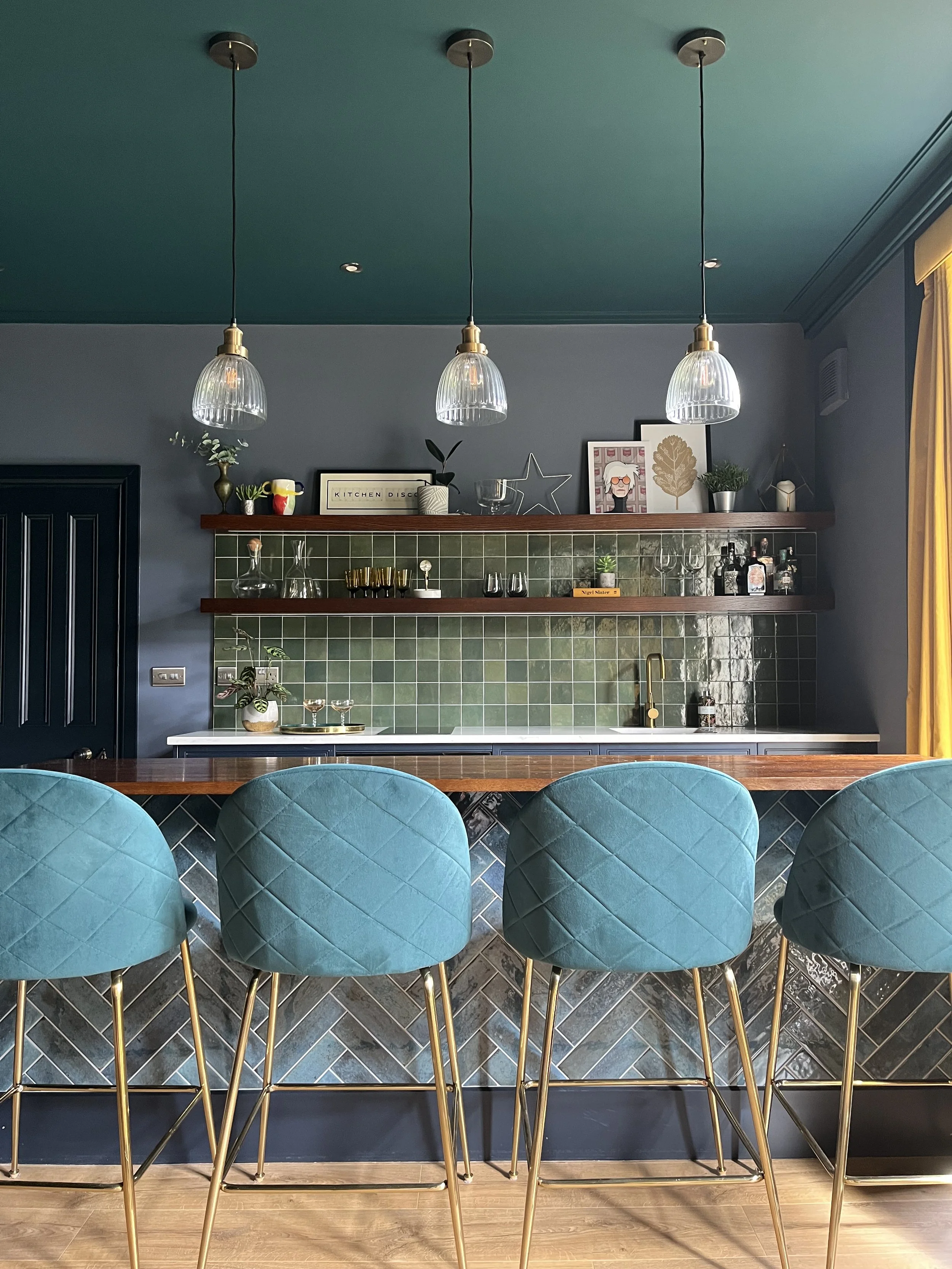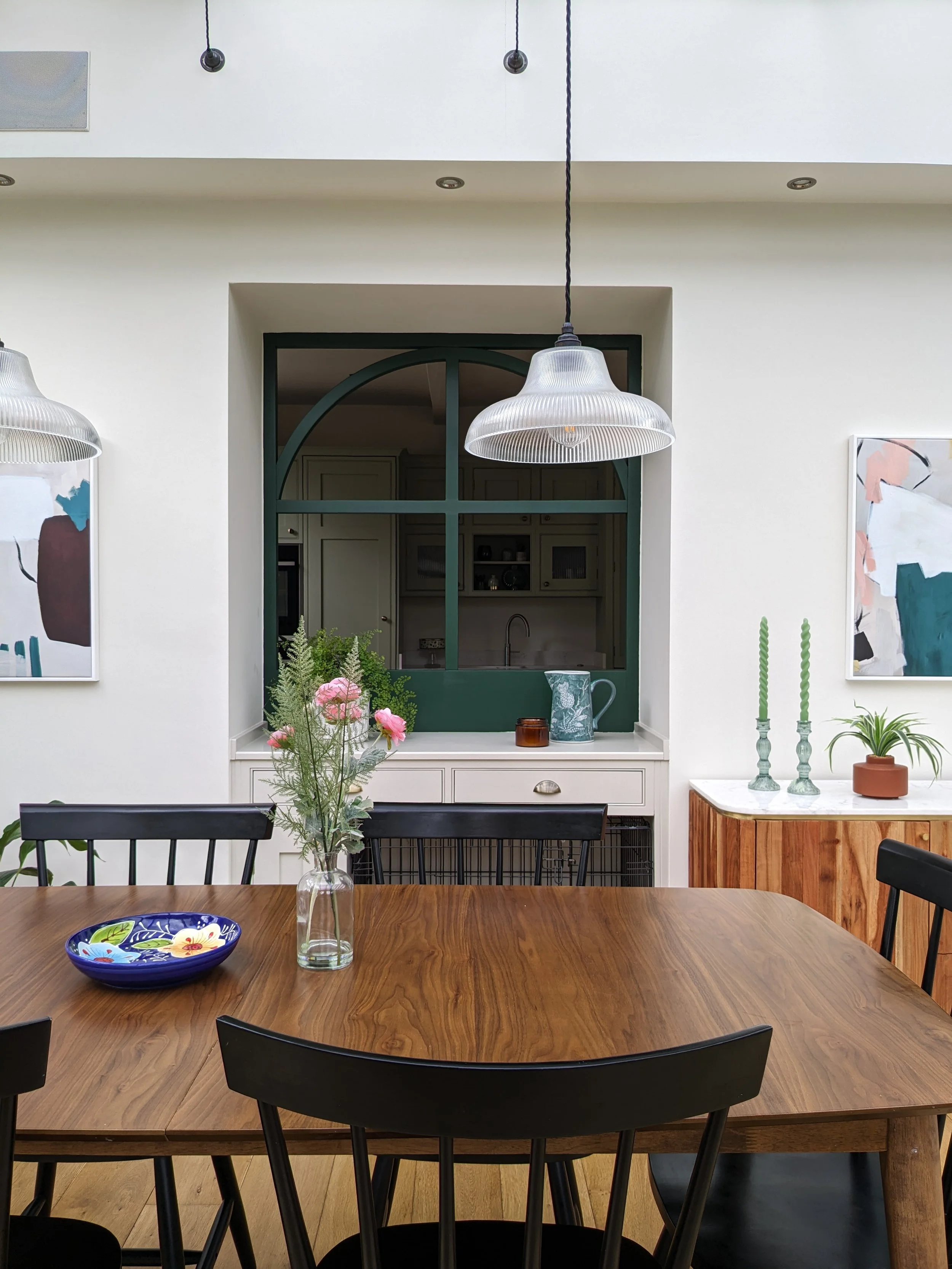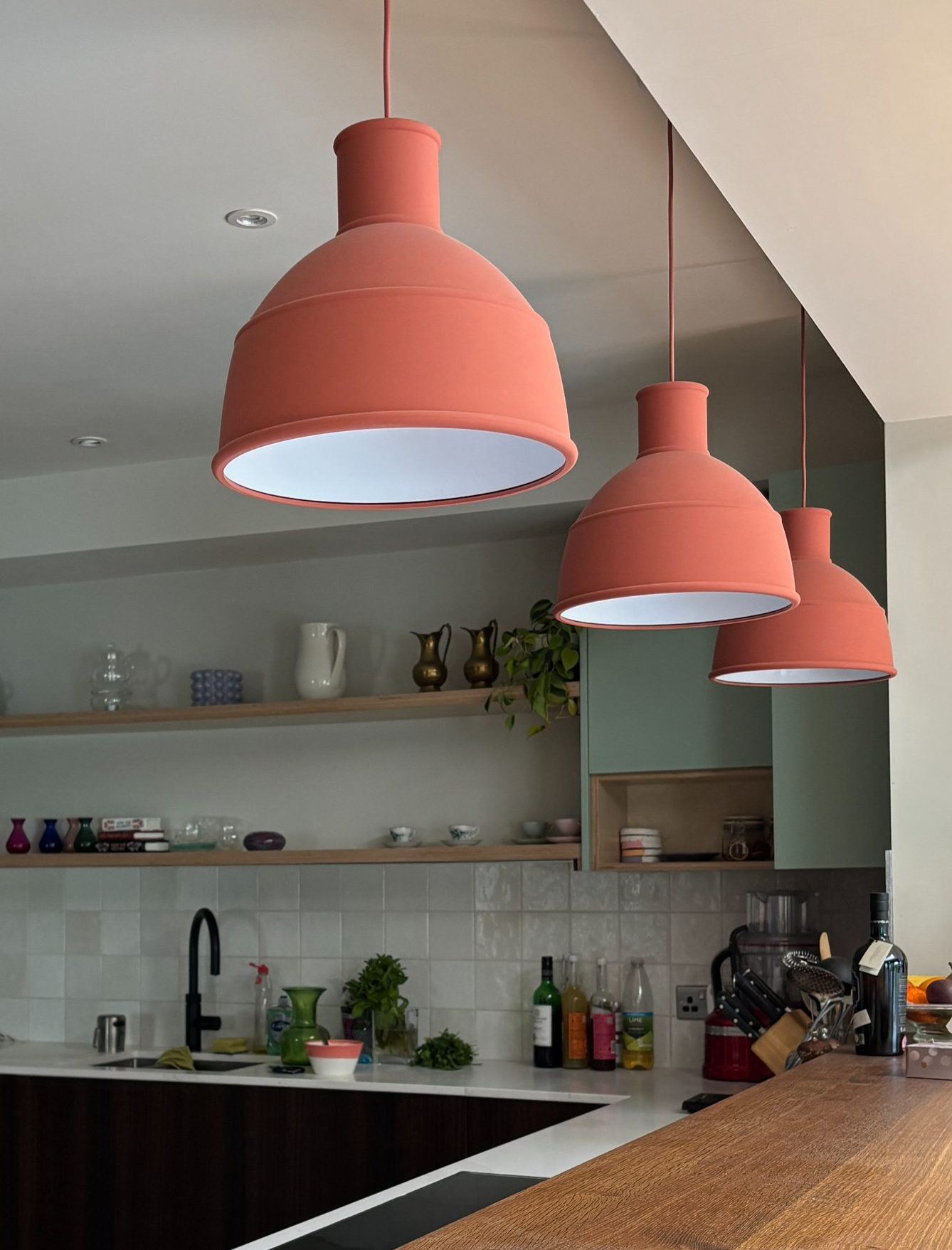A simple guide for hanging kitchen pendant lights
As an interior designer, some of the most common questions I get asked when it comes to kitchens is about lighting. Pendant lights above a kitchen island or dining table are used for task lighting, so a well-lit space is essential and it's really important to get it right.
In this quick guide, I'm sharing my top tips on pendant lighting in a kitchen, including the best height for your light fixtures, how many pendants you need, and the ideal spacing between them. Hopefully it’ll give you confidence to come up with a lighting design that works well both practically and visually.
How many pendant lights do I need?
Most designers recommend three pendant lights, as odd numbers tend to be more visually appealing. But it really depends on the size of your chosen pendants in relation to your table or island – sometimes two, or even one, is better.
In my kitchen-diner, I hung three pendants above the dining table but only two of the vintage Revo pendants above the island. Each island pendant is 30cm in diameter and the island is 180cm wide, so three of them would’ve felt a bit too much. And with three already above the table, it would also have looked a bit too predictable – it’s always good to mix things up a bit!
Sometimes, just one pendant light is the best option, especially if you’re lighting a smaller dining table or island.
If you currently don’t have a pendant light and you don’t want to go to the hassle of having one installed, this plug in Tala pendant light I used in my Manchester open-plan living project is a great solution! It comes with two wall and ceiling nodes so that you can hang it in the perfect spot.
If you're changing your room layout to accommodate a dining table and the existing pendant light is in the wrong position, a great idea is to get a long flex and swag it over the table using a hook like we did at the North Wales coastal home. It’s much less expensive than chipping out plaster to move the lighting fixture. In this case, again a single pendant is the best option.
How high should I hang my kitchen pendant lights?
The general rule is that pendant lights over a kitchen island or dining table should be positioned lower than standard central ceiling lights, because there’s no danger of someone walking into them. I find that 80cm above the worktop or tabletop is the perfect height, regardless of the ceiling height.
How far apart should I position my pendant lights?
The dining space at my Boston Spa project
You need a gap of at least 1.5 times the width of the shade between each one. I also make sure there’s a gap of at least the width of the shade between the edges of the outermost pendants and the edge of the dining table or island. I usually end up with around 60cm-75cm between each pendant, from edge to edge.
If you have an odd number of pendants, position the middle light fixture above the centre of the island or table. There should be an equal space between each pendant. If you have two pendants, position them each side of the island or table, an equal distance from the centre.
What style of pendant light should I choose?
There are many different style options for pendant lighting and while it mainly depends on the look you're going for, there are a few things to bear in mind:
A metal or ceramic shade will provide directional light, meaning it focuses the light downward rather than diffusing it around the room. This makes it ideal for task lighting above a kitchen island or worktop, where you need a bright, focused pool of light for prepping food or reading a recipe.
I don't generally recommend hanging glass pendants above an island, especially if your hob is positioned under them – they can get really greasy and they're a nightmare to keep clean. Save them for the dining area instead.
If you have an open-plan kitchen diner and you're hanging pendants above both the island and the table, use different materials for each. Fluted glass pendants above the table and ceramic or metal ones above the island, for example. If you also have wall lights in the kitchen, you could choose fluted glass ones to help tie things together.
Lighting is such a key part of kitchen design, and it’s worth taking the time to get it right. This guide should give you a solid starting point – but like most design rules, they’re there to help, not to limit you. Sometimes it’s good to break the rules! If you’re planning a kitchen revamp and would like help pulling everything together – from layout and lighting to colours and finishes – take a look at my online design services.

